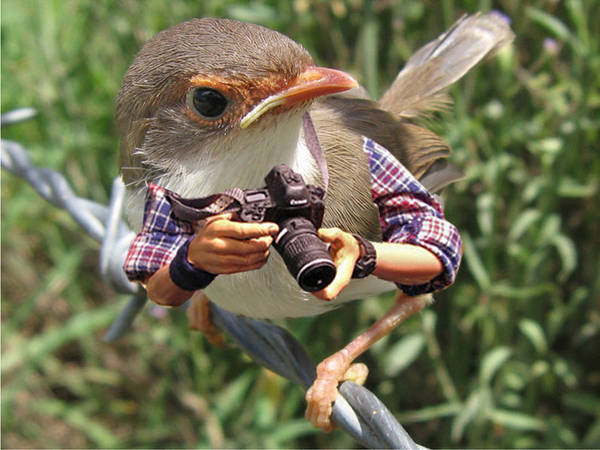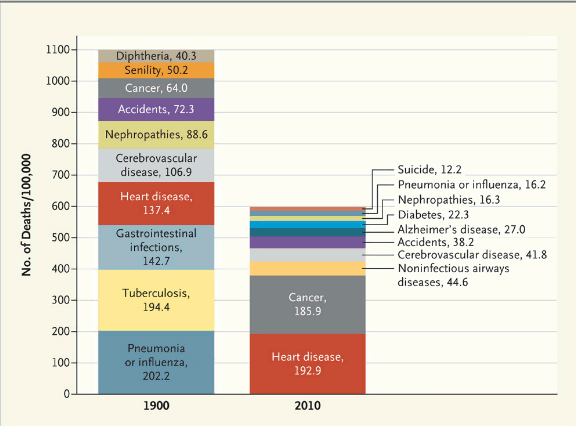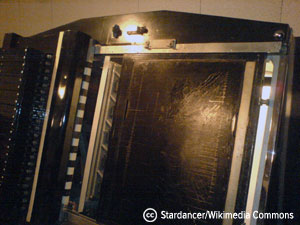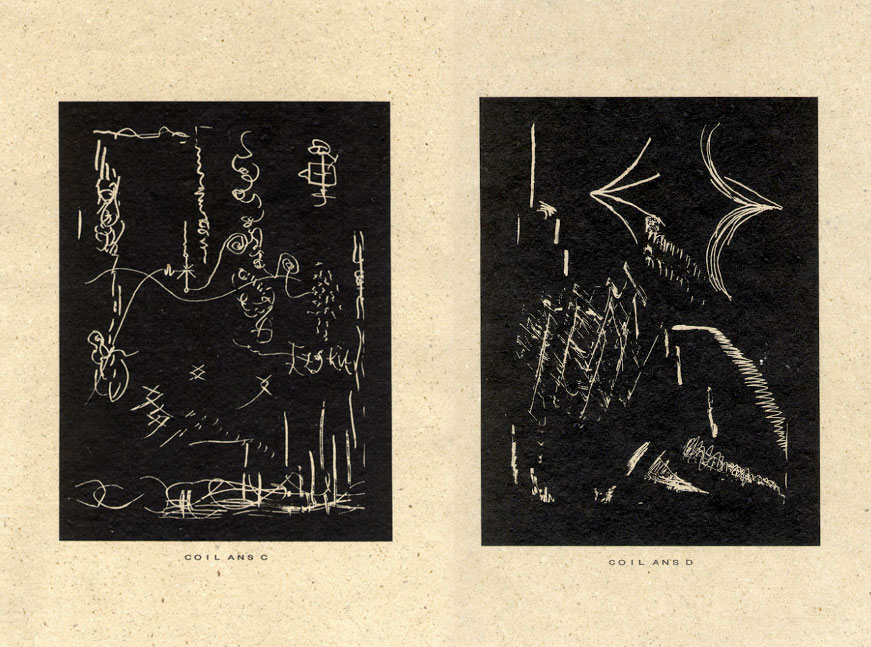

The Birds With Arms Tumblr has a simple command for the net: "Photoshop arms on to birds. Send them to us." This turns out to be remarkably effective.
Birds With Arms
(via Kottke)



During the 20th century, heart disease, cancer, and other chronic conditions assumed more dominant roles (see bar graphTop 10 Causes of Death: 1900 vs. 2010.), although outbreaks of infectious disease — from eastern equine encephalitis (1938) and kuru (1957) to legionnaires' disease (1977), AIDS (1981), and multidrug-resistant tuberculosis (1993) — necessitated ongoing vigilance against microbes. New concerns also came to medical attention, from the terrifying consequences of thermonuclear war (1962) to the indolent but devastating effects of environmental pollution (1966) and climate change (1989). Optimism about prospects for the health of future populations persisted but remained tempered by concern about the pathologies of civilization. An obesity epidemic, feared in 1912, has come to pass. Our previously steady increase in life expectancy has stalled and may even be reversed (2005).


Assistant commissioner Mark Rowley, head of specialist crime and operations at Scotland Yard, said: "This is a great opportunity for the public to help us fight crime and bring those who remain outstanding to justice.
"My hope is that the two-thirds of Londoners who own smartphones will download this app, and help us identify people we still need to speak to.
"We need Londoners to browse through the app every week or so as new images will appear regularly. This is a fantastic way for Londoners to help us to fight crime."

Scriabin’s dream was to stage the Mysterium in the Himalaya. He conceived it as a grand purification ritual where bells were to be suspended from clouds. Thousands of participants, clad in white robes, would intone his melismatic mantras with the fervor of the dervishes, expending every bit of their available energy in the service of his artistic idealism. He envisioned an orgy of the senses, and to this end created a choreography of lights, odors, colors and exotic dances. This was to have gone on for a week, leading to the apocalypse and the end of time. Thus transcended, the physical world, and ego itself would dematerialize; man would be reborn as pure concept. He even went as far as to purchase a plot of land in the Himalaya, fully expecting to realize this magniloquent event.
 Both Scriabin and Theosophy were significant influences on the Italian Futurist movement, particularly Futurist Manifesto author Filippo Marinetti and "Art of Noises" author and electronic music pioneer Luigi Russolo, according to Luigi Russolo, Futurist: Noise, Visual Arts, and the Occult by Luciano Chessa. The Futurists' ambitions to unite art, science and politics echoed the Theosophical Society's efforts to synthesize science and spirituality.
Both Scriabin and Theosophy were significant influences on the Italian Futurist movement, particularly Futurist Manifesto author Filippo Marinetti and "Art of Noises" author and electronic music pioneer Luigi Russolo, according to Luigi Russolo, Futurist: Noise, Visual Arts, and the Occult by Luciano Chessa. The Futurists' ambitions to unite art, science and politics echoed the Theosophical Society's efforts to synthesize science and spirituality.
Question: What kind of trees are planted in the courtyard behind the entrance to this building?
If you study his biography, the emotional vacuum in the guy’s life was quite frightening. His parents are absent on another continent, he’s in boarding schools, in academia, in the intelligence services, in the closet of the mid-20th-century gay life. Although Turing was a bright, physically strong guy capable of tremendous hard work, he never got much credit for his efforts during his lifetime.
How strange was Alan Turing? Was Alan Turing a weird, scary guy? Let’s try a thought experiment, because I’m a science fiction writer and we’re into those counterfactual approaches.
So let’s just suppose that Alan Turing is just the same personally: he’s a mathematician, an early computer scientist, a metaphysician, a war hero — but he’s German. He’s not British. Instead of being the Bletchley Park code breaker, he’s the German code maker. He’s Alan Turingstein, and he realizes the Enigma Machine has a flaw. So, he imagines, designs and builds a digital communication code system for the Nazis. He defeats the British code breakers. In fact, he’s so brilliant that he breaks some of the British codes instead. Therefore, the second World War lasts until the Americans drop their nuclear bomb on Europe.
I think you’ll agree this counter-history is plausible, because so many of Turing’s science problems were German — the famous “ending problem” of computability was German. The Goedel incompleteness theorem was German, or at least Austrian. The world’s first functional Turing-complete computer, the Konrad Zuse Z3, was operational in May 1941 and was supported by the Nazi government.
So then imagine Alan Turingstein, mathematics genius, computer pioneer, and Nazi code expert. After the war, he messes around in the German electronics industry in some inconclusive way, and then he commits suicide in some obscure morals scandal. What would we think of Alan Turingstein today, on his centenary? I doubt we’d be celebrating him, and secretly telling ourselves that we’re just like him.
TED is a large, wall-based installation consisting of an array of 80 Teddy Ruxpin dolls that speak emotional content gathered from the web via synthetic speech with animated mouths. The speaking of the emotional content is accompanied by one of twenty-four musical vignettes that have been paired to the emotional content being spoken. Each vignette, representing one of twenty-four subtle variants of human emotion, have been composed in such a way that the beginnings and ends of the short pieces will seamlessly dogleg in any possible configuration and stream endlessly as a unified whole. The installation is allowed to drift about freely through the emotional landscape being driven only by those who are contributing content to the piece whether unwittingly or consciously. As such the overall presentation of the piece can vary greatly based on external conditions such as seasons, world events and even time of day. The piece is essentially taking the instantaneous emotional pulse of the internet and this collective pulse, like a human pulse, varies over time.